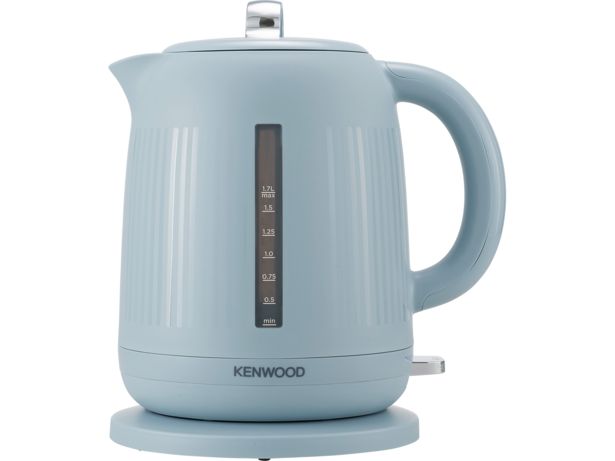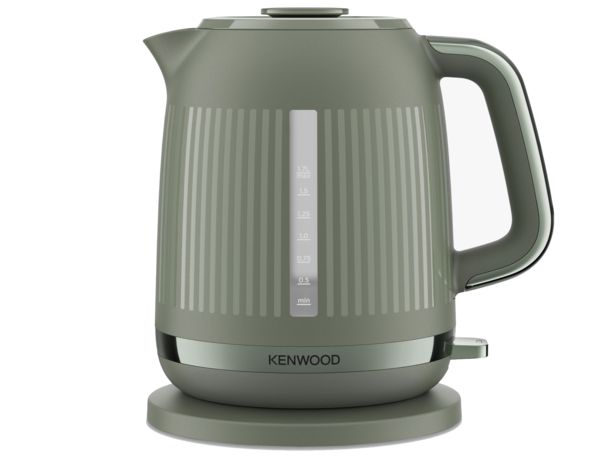By clicking a retailer link you consent to third party cookies that track your onward journey. If you make a purchase, Which? will receive an affiliate commission which supports our mission to be the UK's consumer champion.
How to descale a kettle

Limescale is an age-old inconvenience that's unlikely to disappear any time soon. It causes problems for a wide range of household appliances, including your kettle.
It won't cause any harm to you, but it could mean you end up replacing your kettle far sooner than necessary. There are many things you can do to keep your kettle limescale-free, and we explain a few of them below.
To see some of our top kettle recommendations, go to best kettles.
How to descale a kettle with vinegar
Limescale dissolves easily with a mild acid, so something like ordinary white distilled vinegar from the supermarket is an excellent tool to get your kettle clean and sparkling again. Simply follow the steps below:
- Measure out equal parts white vinegar and tap water.
- Fill your kettle around three quarters full with the mixture.
- Bring it to the boil and leave to stand until it’s completely cooled.
- Drain the water and rinse several times, using a long-handled scrubbing brush to remove any rogue flakes if necessary.
- Fill your kettle with clean water, boil it and empty it a few times to remove any traces of vinegar.
If your kettle is particularly scaly, you can also add a small amount of bicarbonate of soda to the mixture to help shift any stubborn build-up – you should only need about a teaspoon.
Time for a kitchen deep clean? Read our cleaning tips.
Other ways to descale your kettle
Most household acids will do a decent job of dissolving limescale, so if you don’t have white vinegar to hand you could also use citric acid or lemon juice – the results shouldn’t be too different, and the smell will be a little more pleasant.
You can also buy descaling kits that will work on kettles and coffee machines. These usually come in powder form but we’ve also come across some that look just like tea bags. They work more quickly than natural methods, with some claiming to remove limescale in just 10 minutes, but they can be pricey.
Random internet solutions tend to pop up from time to time, including using fizzy drinks like Coca-Cola to get the shine back in your kettle. These approaches should always be taken with a pinch of salt, as although they may be able to remove some limescale, they could also damage your kettle and potentially void your warranty.
Read about five simple ways to remove limescale from your kettle, including using lemon juice and citric acid
The problems limescale causes for kettles

Here are a few things that can happen if you let limescale build up inside your kettle for a long period of time:
- The heating element in your kettle starts to become less effective, meaning it takes longer to boil water and is therefore less energy efficient.
- Your hot drinks will start to taste a bit funny – particularly tea – as the minerals found in limescale impact how the flavours in tea are broken down.
- You may find loose pieces of limescale floating in your morning cuppa, or even worse, accidentally crunch into one
Almost any kettle you buy from a reputable manufacturer will come with some sort of limescale filter in the spout, which is designed to separate the limescale from the water as you pour.
To avoid any unwanted flakes in your hot drinks, look for a tightly fitting limescale filter made of very thin mesh with no gaps around the sides.
How we test limescale filters in kettles
We carefully inspect each limescale filter to check that it fits snugly into the spout of the kettle, as otherwise limescale particles can sneak around the edges and still make their way into your cup.
We then pass small amounts of debris through the filter to check how well it does its job, and also look at how easy it is to remove, clean and replace when you’re done.
If you’re not sure what else you should consider when buying a new kettle, check out our guide on kettle features explained for a comprehensive overview.
What is limescale and what causes it?
Limescale is a hard chalky substance that mainly consists of calcium carbonate, which is commonly found in rocks, seashells and eggshells. It’s usually off-white in colour, but it can also be grey, pink, or even a reddish-brown in some cases.
It's more commonly found in parts of the country with ‘hard water’, which is water that contains large amounts of calcium and magnesium. Over time, if left untreated, it builds up inside your kettle and forms a flaky, scaly coating that won’t disappear on its own.
Hard water vs soft water

You might have been told to expect limescale to be a bigger problem if you live in a hard-water area, but what’s the real difference between hard and soft water?
As we mentioned above, hard water is water that has a high mineral content, whereas soft water is low in minerals but has a higher sodium content. Hard water is created when rainwater filters through areas with large deposits of limestone or chalk, such as soil, lakes and rivers.
Is my water hard or soft?
Whether your water is hard or soft depends on where you live. Hard water is most commonly found in the south east and London, although if you live on the east coast (including large parts of Yorkshire) you might also experience rapid limescale build-up.
As you can see in the map below, most of Scotland, Northern Ireland and Wales have very soft water, as does the south west and north west of England. The Midlands (including Birmingham, Leicester and Nottingham) are a bit of a mixed bag, but water in those areas tends to vary from slightly to moderately hard.
Map of hard water areas across the UK

There are a handful of home tests that will tell you whether your water is hard or soft. You can buy special kits or do it yourself using household materials – the latter is not as accurate though.
One of the most common DIY methods is to use soap and boiling water:
- Half fill a clean bottle with tap water
- Add a soapy solution one drop at a time and shake for 10 seconds until a lather forms. Try to use pure liquid soap (a soap derived from vegetable oils) rather than detergent, as detergent creates foam regardless of water hardness.
- Note how clear the water is. If you've got hard water, you'll notice that the water below the suds will be cloudy rather than clear, and the suds themselves will be very shallow and not fluffy.
The more soap needed to make a lather, the harder your water is. This is because soap works by bringing together grime and water to lift away the dirt on your dishes, but in hard water the soap binds to calcium ions and forms an insoluble substance known as calcium stearate – we know it as scum.
Is it dangerous to consume limescale?
Limescale is a naturally occurring substance and is not at all dangerous to consume. Tap water containing large amounts of limescale may not taste great though, and it often gives hot drinks a slightly salty or bitter aftertaste.
You might have read somewhere that drinking hard water can cause health problems, such as kidney stones, but these claims are 100% false. In fact, the minerals found in hard water (calcium and magnesium) are often found in bottled water that you can pick up at your local supermarket.
Is it possible to prevent limescale?

While it’s impossible to prevent limescale completely, especially if you live in a hard-water area, there are a few things you can do to reduce the build-up in your kettle.
Using a water filter is perhaps the most viable option for most people, as this will remove some of the minerals that cause water to become ‘hard’. There’s no concrete evidence that this will solve your limescale problems completely, but a good-quality filter will massively improve your water quality.
You can buy ‘descaler balls’ that claim to collect limescale deposits every time you use your kettle, but these can be pricey and there’s no evidence that they actually work. If you do fancy giving them a go, be sure to check your kettle’s instruction manual first to make sure using one won’t void your appliance’s warranty.
Perhaps the simplest way to keep limescale at bay is to make sure to empty your kettle after every use. Leaving standing water in it for long periods of time can really exacerbate the problem. Otherwise, simply clean your kettle (inside and out) every month or so.
Fed up of waiting around for a kettle to boil? Take a look at our guide on quookers and boiling water taps and find out if they’re really worth it.



